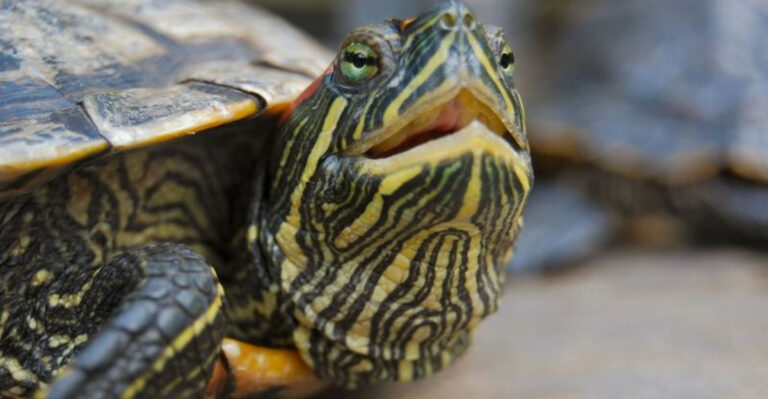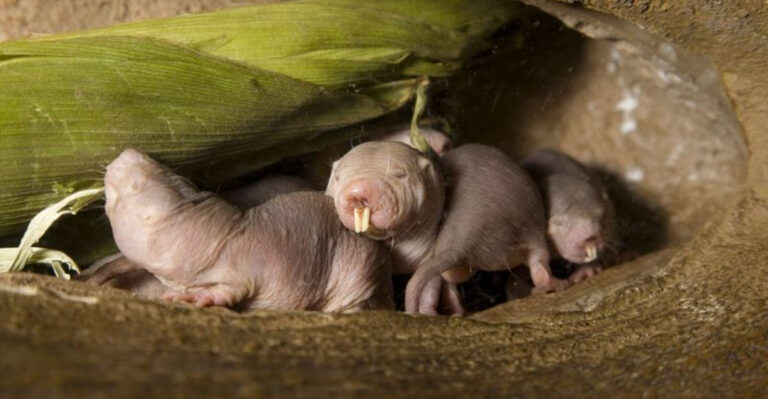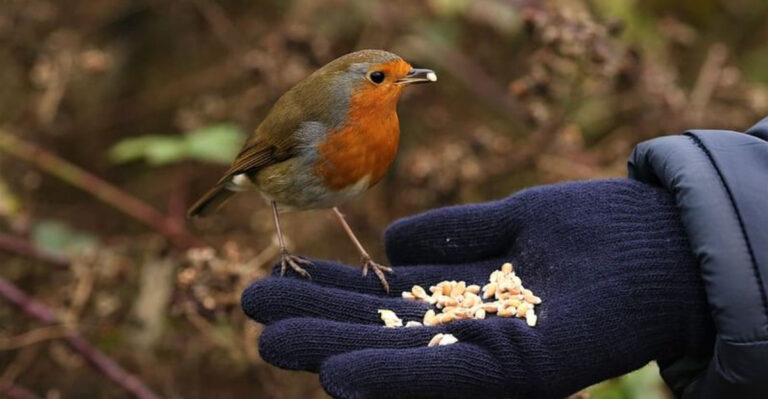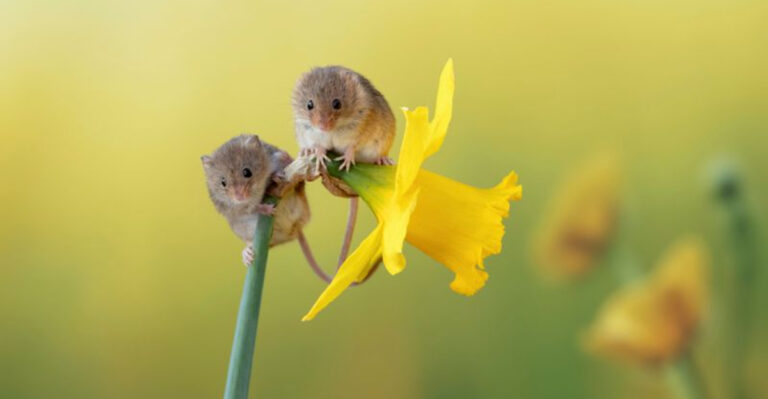10 Ways How To Identify A Hairy Woodpecker
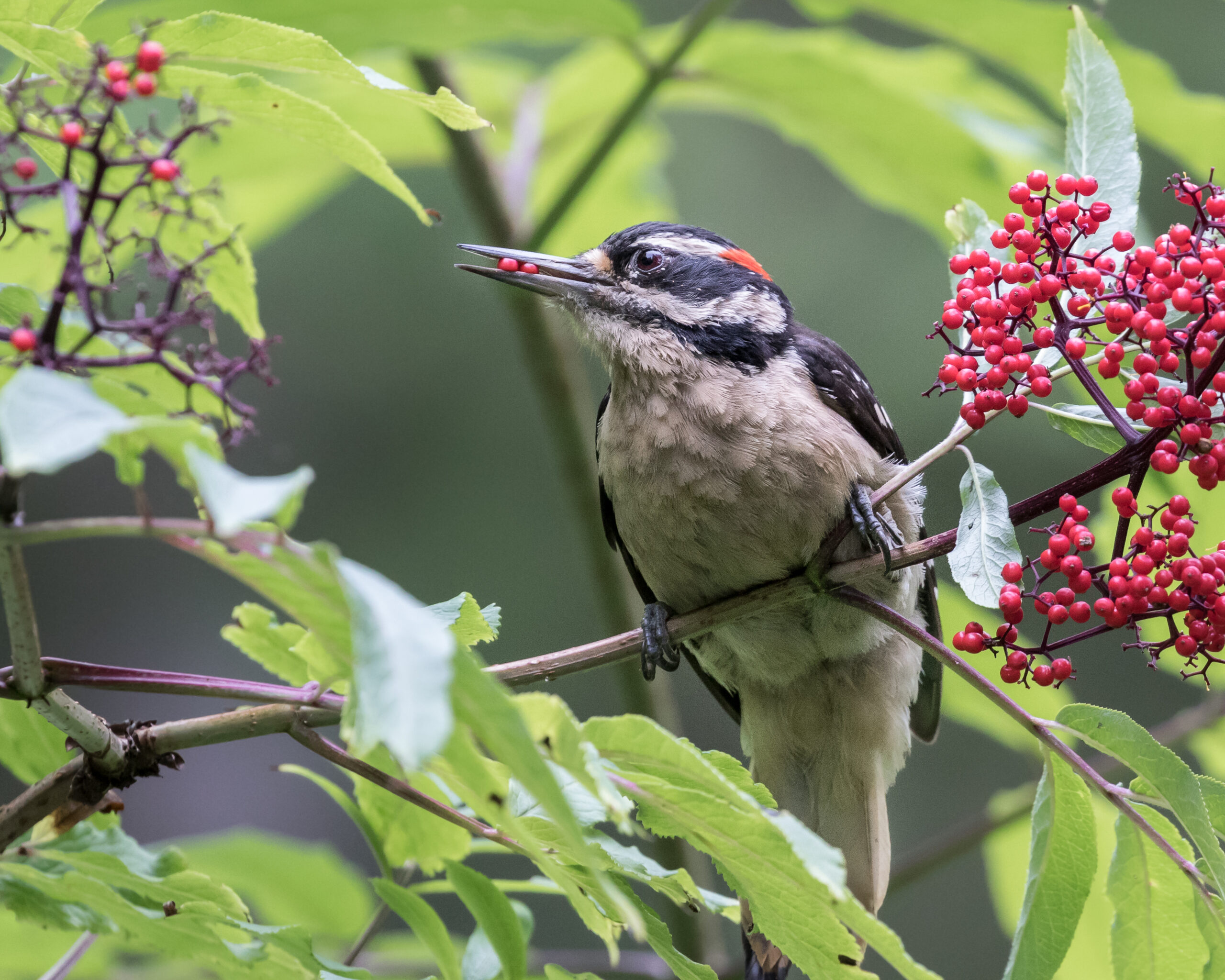
Identifying a Hairy Woodpecker might seem like a feather-ruffling challenge at first, but with the right tips, you’ll soon be spotting them with your eyes closed. These charming woodland creatures are known for their distinctive drumming and striking appearance.
Whether you’re an avid birdwatcher or a curious backyard explorer, discovering the unique traits of the Hairy Woodpecker can be a delightful experience. Let’s explore distinct ways to recognize these fascinating birds, ensuring your birdwatching adventures are always a success.
1. Size And Shape Matters
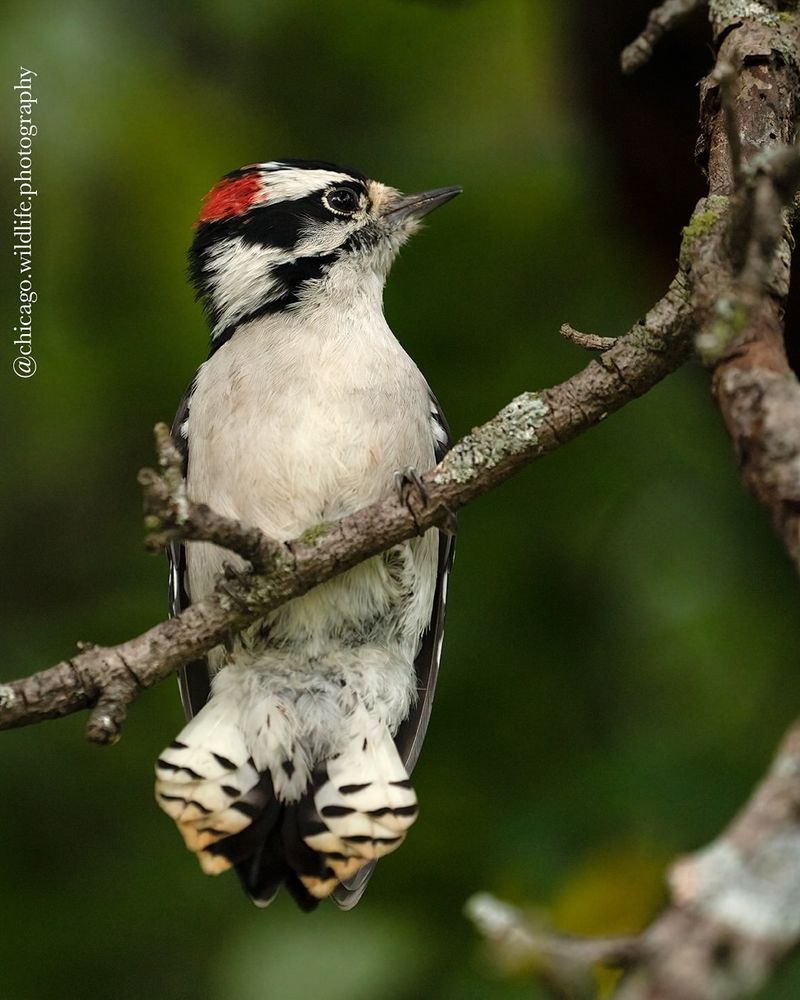
One of the first clues to identifying a Hairy Woodpecker is its size and shape. Unlike their smaller cousins, Hairy Woodpeckers maintain a medium stature with a robust appearance, acting like the bodybuilders of the woodpecker world.
With a body length between 9 to 10 inches, they possess a wingspan that stretches to about 15 inches, making them a significant presence in their natural habitat. Their shape is marked by a strong bill, almost as long as their heads, which differentiates them from other woodpeckers.
Their tails are stiff and serve as a support when they drum on trees, a common behavior among these birds. This physical structure enables them to perform their acrobatics with ease, navigating tree trunks with the agility of a seasoned climber.
Observing these features closely can provide a reliable visual cue for recognizing a Hairy Woodpecker. So, next time you spot a woodpecker, remember to size it up – literally! This initial observation can often set the foundation for confirming whether you’ve encountered a Hairy Woodpecker or its smaller relatives.
2. Distinctive Plumage Patterns
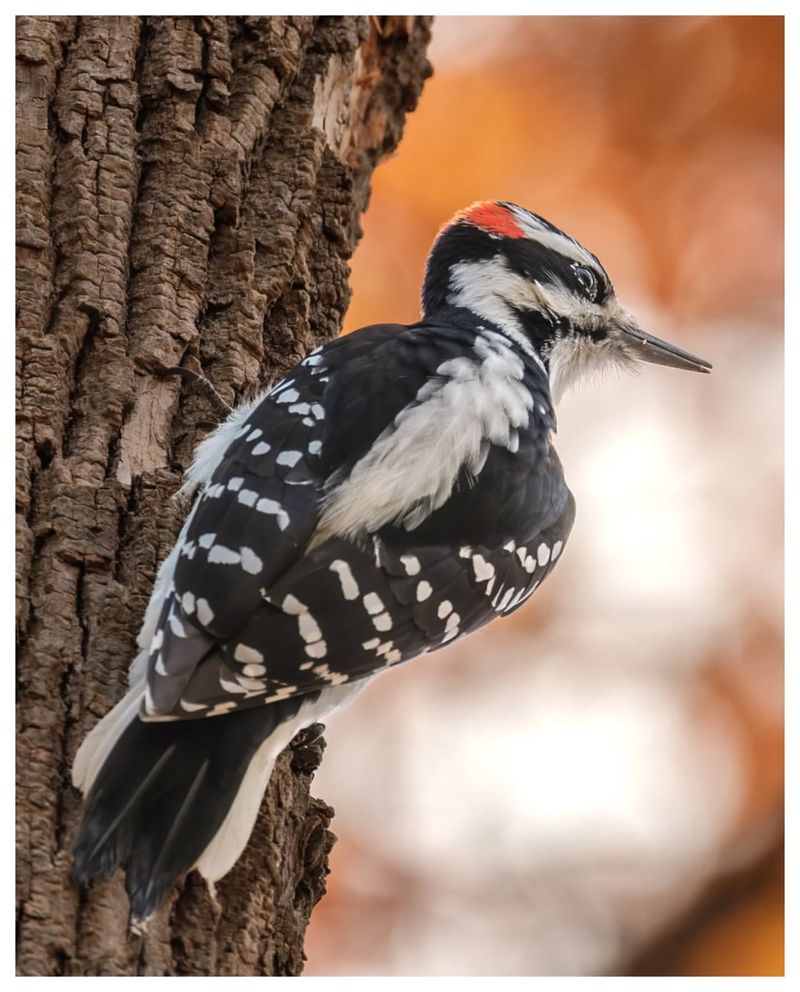
The plumage of a Hairy Woodpecker is as fashionable as a checkerboard flannel, making it stand out among its peers. Their feathers showcase a striking black and white pattern, which plays a crucial role in their identification.
The body predominantly features a black back with white spots, painting a checkered design across their wings and back. This pattern is not only eye-catching but acts as an excellent camouflage amidst the tree bark they frequent.
The underparts of the Hairy Woodpecker are a stark white, creating a neat contrast with the darker upper parts. Male Hairy Woodpeckers boast a small splash of red on the back of their heads, adding a dash of color to their monochrome ensemble.
This red patch is a tell-tale sign of males and helps in distinguishing between genders during your birdwatching ventures. When observing a woodpecker, take a moment to appreciate its feathered artistry.
The unique patterns are not only a delight to the eyes but also a key characteristic in confirming the species’ identity. Whether they’re pecking away or simply perched, the Hairy Woodpecker’s plumage is a vibrant indicator of its presence.
3. Unique Vocalizations
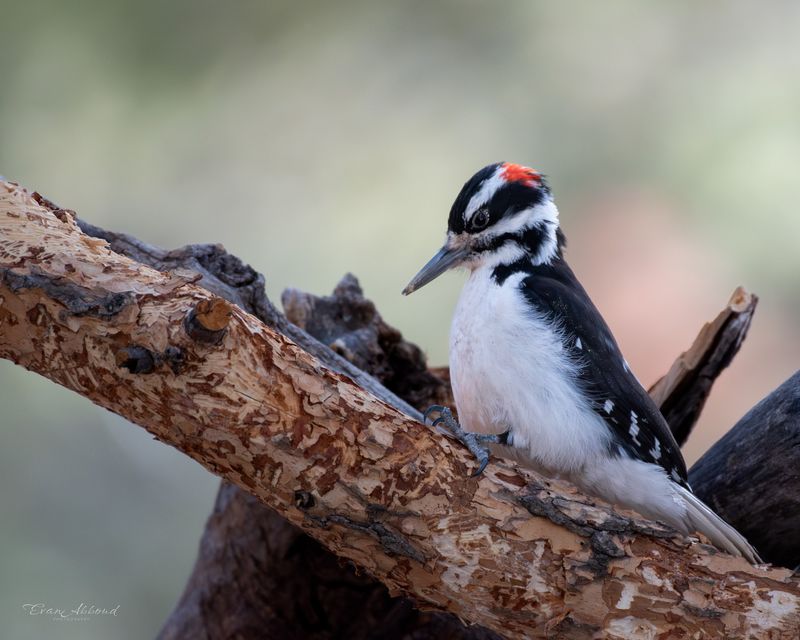
Listening to a Hairy Woodpecker is like attending a woodland concert with its own unique rhythm section. These birds have distinctive vocalizations that set them apart, a key aspect of their identity.
The Hairy Woodpecker’s call is a sharp, high-pitched “peek,” often repeated rapidly, echoing through the forest like a nature’s alarm clock. This call is not only a way to communicate with other woodpeckers but also serves as a warning signal to potential intruders.
In addition to their vocal calls, Hairy Woodpeckers are known for their drumming sound, resembling a percussionist tapping a snare drum. This drumming is not just a musical performance but a method of marking territory and attracting mates.
The rhythm and frequency of their drumming can vary, providing clues to other woodpeckers about their presence and intentions. When trying to identify this bird, pay close attention to the sounds of the forest.
The Hairy Woodpecker’s vocal and drumming patterns are like their personal signature, helping birdwatchers and enthusiasts alike recognize them even when they’re out of sight. So, tune your ears to the woodland symphony and let the Hairy Woodpecker’s calls guide you.
4. Behavioral Traits
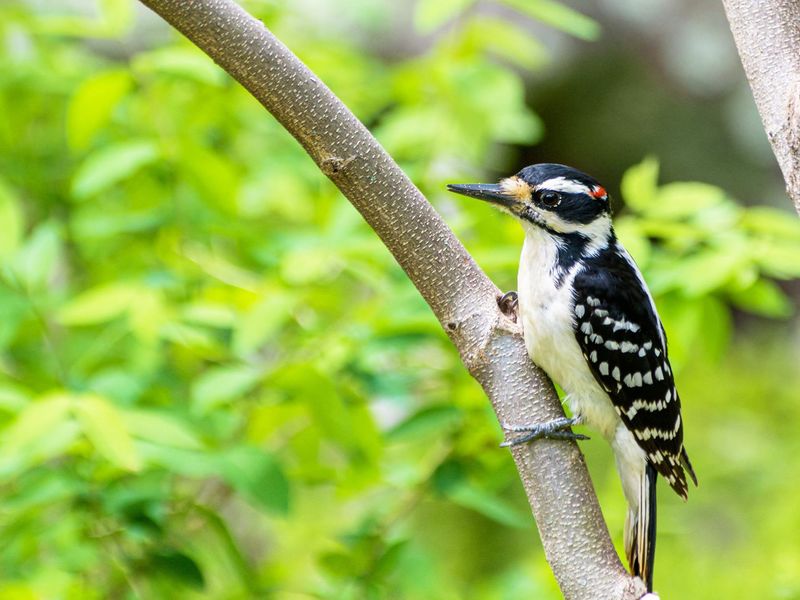
If you think all woodpeckers behave the same, the Hairy Woodpecker is here to peck away that misconception. Their behavioral traits are as distinctive as their physical appearance, offering yet another way to spot these vibrant creatures.
One of the most notable behaviors of Hairy Woodpeckers is their relentless drumming on tree trunks. This is no casual tapping; they drum with vigor, often producing a rapid, rhythmic sound.
This drumming serves multiple purposes, from searching for insects hiding beneath the bark to establishing territory and attracting potential mates. Their ability to drum with such intensity stems from their strong neck muscles and sturdy bills, making them adept at both feeding and communicating.
Apart from drumming, these woodpeckers display impressive climbing skills. They move vertically along tree trunks with ease, supported by their tail feathers and feet with two toes pointing forward and two backward. This unique foot structure aids in their acrobatic navigation.
Observing a Hairy Woodpecker in action can be a captivating experience, revealing the dynamic lifestyle of these birds. So, the next time you’re in the forest, watch for their bustling activity and let it lead you to a positive identification.
5. Habitat Preferences
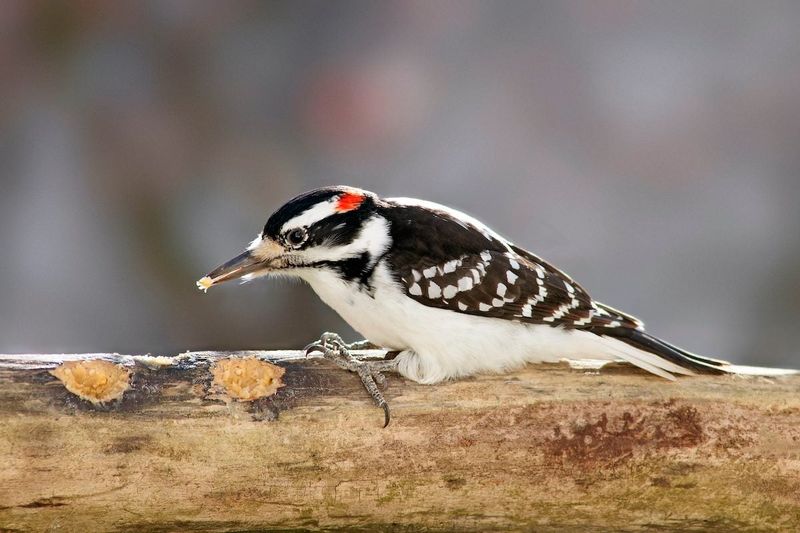
Finding a Hairy Woodpecker requires knowing where they like to hang out. These birds are particular about their habitat, favoring deciduous forests with plenty of mature trees.
They often frequent woodlands, suburban areas, and even parks, making them accessible to birdwatchers and nature enthusiasts alike. Their preference for large trees is primarily because these environments offer ample food sources and nesting sites.
Hairy Woodpeckers are frequently found pecking away at tree trunks in search of insects, their primary diet. The availability of insects and larvae beneath the bark makes these sites perfect for foraging. Additionally, these areas often provide excellent nesting cavities, which are crucial for raising their young.
Understanding their habitat preferences can significantly increase your chances of spotting these birds. By exploring forests with tall, mature trees, you’ll likely encounter the Hairy Woodpecker in its natural environment.
So, if your goal is to see one, grab your binoculars and head to their preferred locales. Their choice of habitat, combined with their distinct behaviors and sounds, makes them relatively easy to identify once you’re in the right setting.
6. Dietary Habits
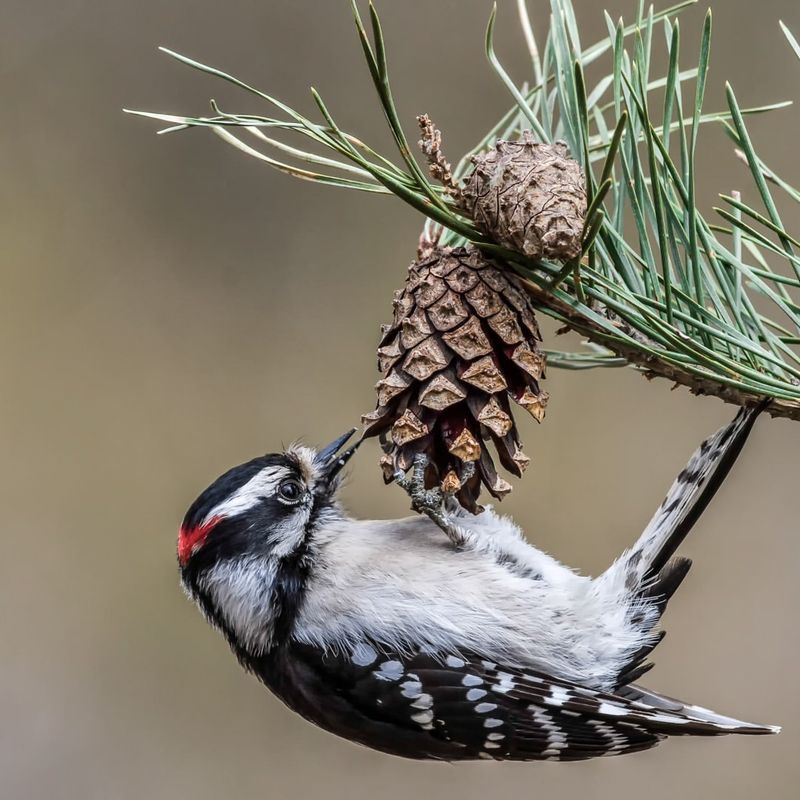
When it comes to dining, Hairy Woodpeckers are the gourmets of the bird world, known for their particular taste for insects. These woodpeckers primarily feed on insects, especially those lurking beneath the bark of trees.
This preference plays a crucial role in their identification, as their foraging behavior is a sight to behold. Watching a Hairy Woodpecker at work can feel like observing a master chef in action. They use their long, sturdy bills to drill into the bark, extracting ants, beetles, and larvae with precision.
This feeding method not only showcases their skill but also highlights their importance in controlling insect populations within their habitats. In addition to insects, they occasionally consume seeds, nuts, and fruits, adding a bit of variety to their diet.
However, their primary focus remains on insects, which provide the necessary protein and energy they need. By understanding their dietary habits, birdwatchers can anticipate where and when to spot them, especially while they’re in the midst of a feeding frenzy.
So, if you wish to observe a Hairy Woodpecker, keep an eye on the trees and watch for their telltale foraging behavior.
7. Nesting And Breeding
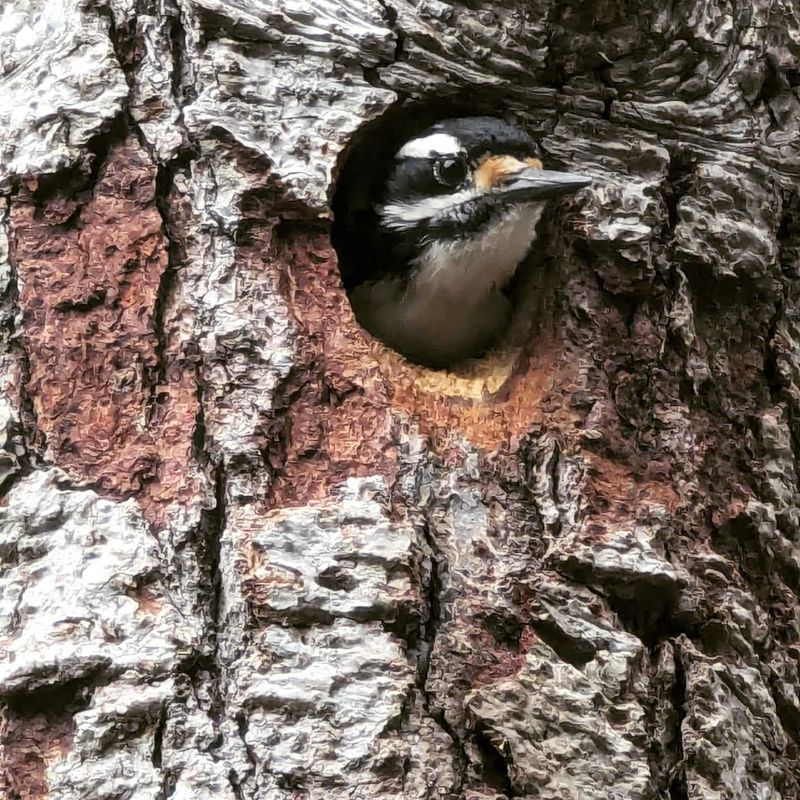
A peek into the nesting habits of the Hairy Woodpecker reveals a world of family life and architectural prowess. These woodpeckers are excellent carpenters, creating their nests by chiseling cavities into tree trunks.
Their nesting behavior is a distinctive aspect of their lives, providing an avenue for identification and understanding of their species. Hairy Woodpeckers typically choose dead or decaying trees for nesting, as the softer wood is easier to excavate.
These nests serve as safe havens for raising their young, protecting them from predators and harsh weather conditions. The entrance to the nest is usually round, just large enough for an adult woodpecker to enter, providing an excellent vantage point to observe these birds.
During the breeding season, which occurs in late spring and early summer, both male and female Hairy Woodpeckers share the responsibility of incubating eggs and feeding the chicks.
Observing a pair of woodpeckers taking turns at the nest is not only fascinating but also provides clues to their identity. By paying attention to their nesting and breeding behaviors, birdwatchers can gain a deeper understanding of these remarkable birds.
8. Flight Pattern
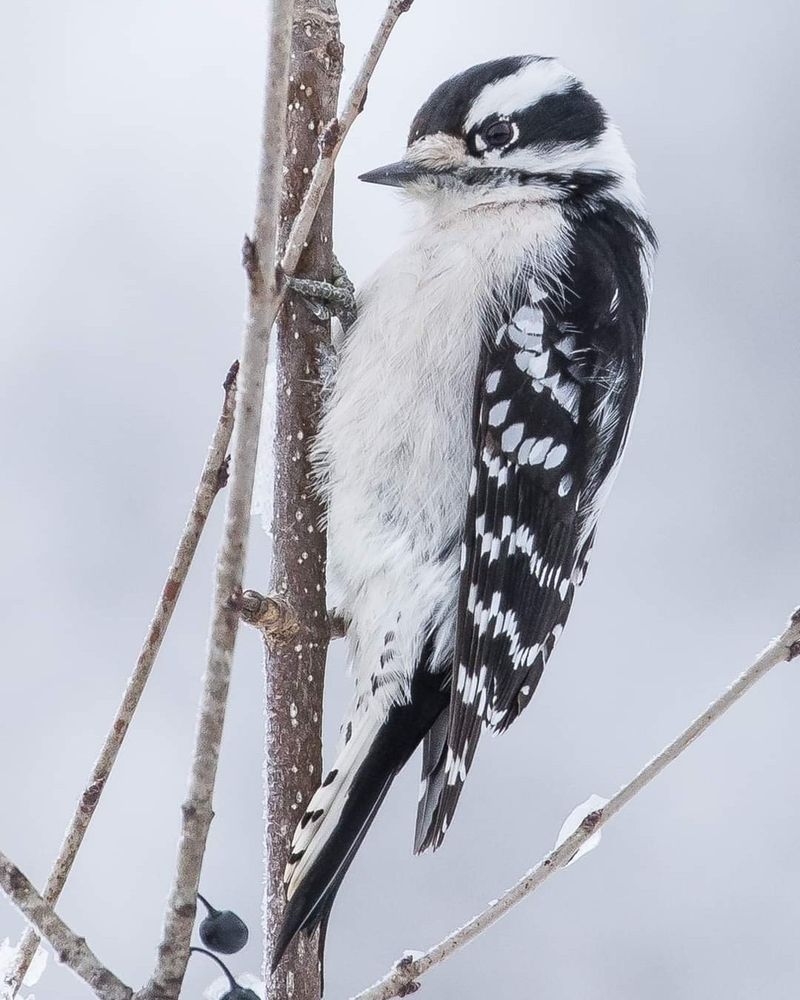
Spotting a Hairy Woodpecker in flight is like watching a nature documentary unfold before your eyes. These birds exhibit a characteristic flight pattern that is both graceful and distinct, aiding in their identification.
Their flight is undulating, resembling a roller coaster ride, with a series of rapid wingbeats followed by a brief glide. This unique motion sets them apart from other bird species and is a reliable identification trait for birdwatchers.
During their flight, their black and white plumage becomes particularly noticeable, creating a visual spectacle against the backdrop of the forest. This pattern is not only beautiful but also serves as a practical tool for recognizing them from a distance.
When observing woodpeckers, paying attention to their flight can provide vital clues about the species. The Hairy Woodpecker’s flight pattern is consistently undulating, making it easier to distinguish from other birds with smoother flight paths.
By watching for this distinctive movement, bird enthusiasts can confirm their sightings with confidence and enjoy the elegance of a Hairy Woodpecker soaring through the trees.
9. Territorial Markings
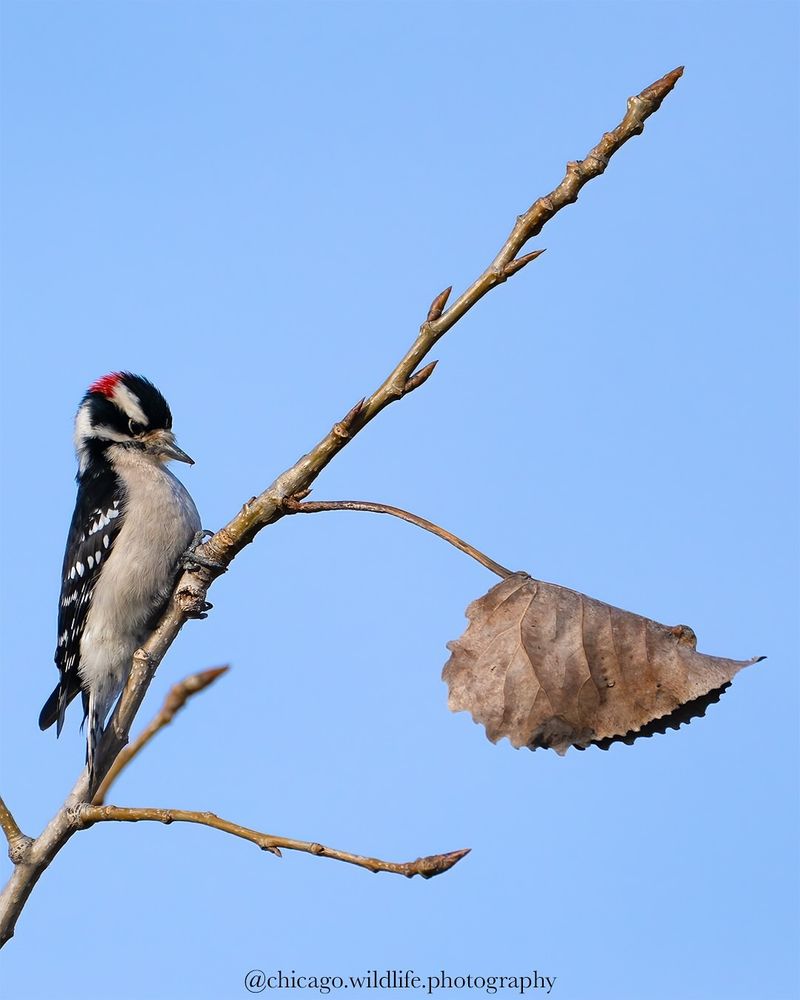
Territorial instincts in Hairy Woodpeckers are as strong as their drumming, making them formidable defenders of their space. These birds are territorial by nature, often seen fiercely guarding their chosen area from intruders.
This behavior is a key aspect of their identity and provides another method for recognition. A primary way they mark their territory is through drumming, a behavior that serves both as a warning and an advertisement of their presence.
The sound of their drumming can travel significant distances, effectively communicating their dominance to other woodpeckers. Additionally, they may leave physical marks on tree trunks, a visible sign of their presence.
Observing a Hairy Woodpecker defending its territory offers insight into their behavior and can aid in their identification. Their territorial markings and behaviors are not only fascinating to watch but also highlight their role in the ecosystem as both residents and protectors of their habitat.
By understanding these behaviors, birdwatchers can better appreciate the complex social dynamics of these remarkable birds.
10. Seasonal Movements
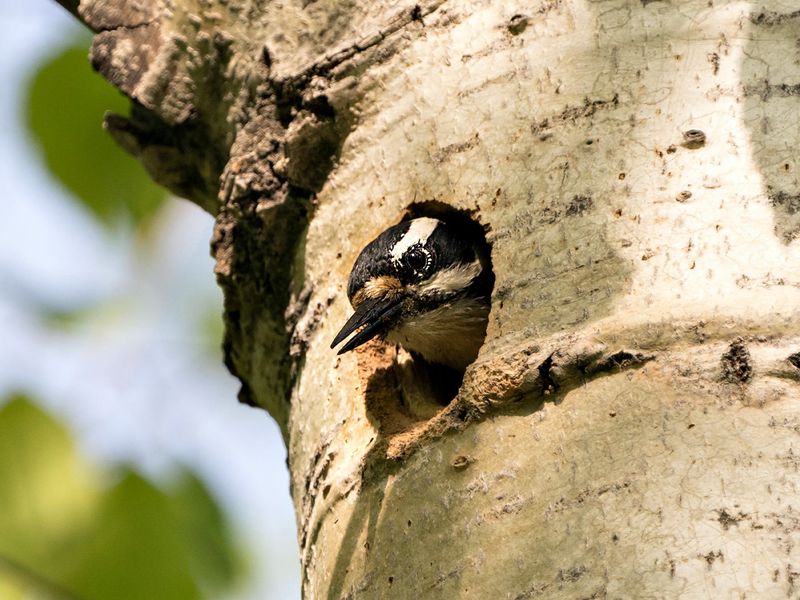
As seasons change, so do the habits and movements of the Hairy Woodpecker. While these birds are generally considered resident species, showing little migratory behavior, they do exhibit some seasonal movements.
Understanding these patterns can enhance identification and offer deeper insights into their lifestyle. During the colder months, Hairy Woodpeckers may venture further in search of food, especially in areas where insect availability diminishes.
This seasonal movement is not migration in the traditional sense, but rather a local shift to ensure survival through the winter. Birdwatchers might notice an increase in Hairy Woodpecker activity as they adapt to seasonal shifts, often seen exploring new areas or frequenting backyard feeders for seeds and nuts.
This adaptability ensures their resilience and presence across various landscapes. Recognizing these seasonal movements can aid in predicting their behavior and support conservation efforts by understanding their ecological needs throughout the year.
By tracking these subtle shifts, enthusiasts can continue to enjoy the vibrant presence of Hairy Woodpeckers throughout the changing seasons.

